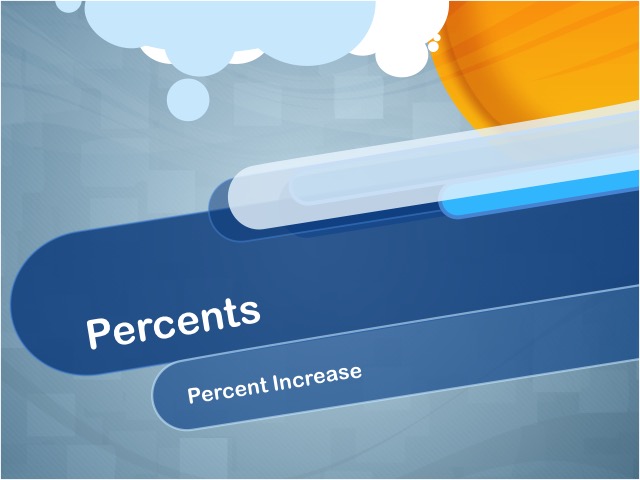
Display Title
Video Tutorial: Percents, Video 9
Display Title
Video Tutorial: Percents, Video 9
Topic
Percents
Description
The video explains how to calculate percent increases, focusing on changes in school enrollments, asset values, and cube dimensions. Examples highlight the non-linear effects of changes on surface area and volume. Applications include finance, education, and geometry, emphasizing understanding growth trends.
The video explores how percentages are used to solve mathematical problems, reinforcing students' numerical reasoning skills. This content aligns with the topic by introducing concepts like ratios, proportions, and their applications in real-world scenarios. For example, understanding percent increase or decrease builds foundational skills for more complex financial mathematics.
Teacher's Script: Today, we’ll watch a video that demonstrates how percentages are applied in practical situations. This resource will guide you through solving percent-based problems and interpreting results in a meaningful way. Pay close attention to how the video breaks down each step, using clear explanations and visuals to illustrate these concepts. This is an opportunity to deepen your understanding and ask questions about anything unclear.
For a complete collection of videos related to Percents click on this link: Video Tutorials: Percents Collection.
What Are Percents?
Percents are a type of fraction. A fraction is part of a whole.
When you think of fractions, you usually think of a numerical expression that looks like this:
A percent is a special type of fraction, as you can see here. When written as a fraction, a percent has a denominator of 100.
If you see a fraction with 100 in the denominator, think of it as a percent. In fact, the word “percent” literally means “out of 100.” An alternative to writing a percent as a fraction is to use the percent symbol, or %.
Converting Fractions to Percents
When comparing fractions, sometimes it's easier to convert them to percents. Take a look at these examples.
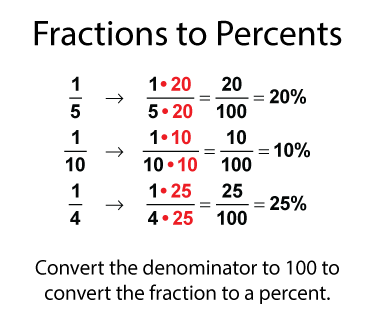
In each case, the denominator of the fraction isn't 100. Multiply the numerator and denominator by the same number to convert the denominator to 100. When you do that, you can write the fraction as a percent. The reason for multiplying the numerator and denominator by the same number is to not change the value of the fraction.
What if you have a fraction that isn't a factor of 100? In those case, you can divide the numerator by the denominator and multiply the result by 100%. Here's an example.

Why Convert Fractions to Percents?
When comparing fractions, sometimes it's easier to make these comparisons when the fractions are rewritten as percents. Take a look at this table, which lists fractions and their corresponding percent values.
| Fraction | Percent |
| 1/8 | 12.5% |
| 1/4 | 25% |
| 1/2 | 50% |
| 3/5 | 60% |
Do you see how much easier it is to compare and order fractions, if you are comparing the corresponding percent values?
Visual Models for Percents
You can use a visual model to represent percents. A 10 x 10 grid is made up of 100 smaller squares. Each small square represents 1%.
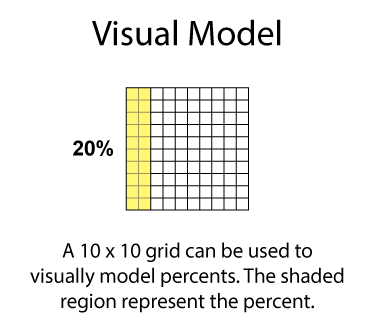
Visual models are useful when first learning about percents.
Percents as Decimals
You saw previously how fractions can be converted to decimals and then percents. Percents can also be represented as decimals.
Here's a way to convert a percent to a decimal using place value. Starting at the decimal point, shift it two places to the left and write the percent symbol. Here are several examples.

Use this technique when you need to find the percent of a number,
Percent of a Number
Since a percent is a type of fraction, then finding the percent of a number is the same as finding the fractional amount of a number. The simplest way to find the percent of a number is to multiply by the corresponding decimal value. Here are two examples.
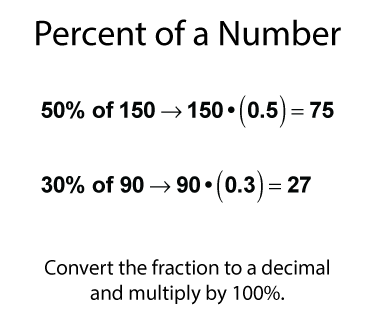
There are many examples of finding the percent of a number. One of the most common is the tax on a purchase. Suppose there's a 5% sales tax and you purchase a $25 item. What's the amount of tax owed? The calculation is shown below.
25 • 5% = 25 • (0.05) = 1.25
Percent Increase
When one number changes in value, that represents a percent change. For example, if you have money in a savings account and it earns interest, this is an example of percent increase. Here is the formula for calculating percent increase.
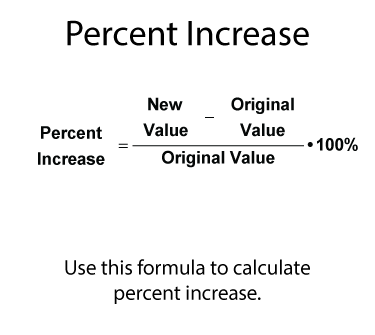
Suppose you bought a souvenir for $50 and resold it for $75. What is the percent increase in the value of the souvenir? Follow the steps for calculating the percent increase.
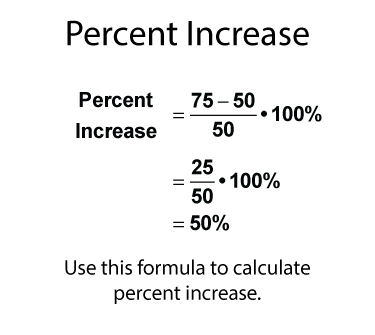
Percent Decrease
Suppose a number decreases in value. That also represents a percent change. In this case it is a percent decrease. Use the same formula to calculate the percent decrease.
Solving Percent Equations
Percents play an important role in solving equations. There are three types of equations that involve percents:
- Finding the percent of a number: x = a% • b.
- Finding the percent one number is of another: a • x% = b.
- Finding the whole given the percent: x • a% = b.
Study these three equation types and you'll be able to solve most problems that involve percents. As you solve word problems involving percents, you will likely be working with one of these equation types.
| Common Core Standards | CCSS.MATH.CONTENT.6.RP.A.3, CCSS.MATH.CONTENT.7.RP.A.2, CCSS.MATH.CONTENT.6.RP.A.3.C |
|---|---|
| Duration | 5.00 minutes |
| Grade Range | 6 - 8 |
| Curriculum Nodes |
Algebra • Ratios, Proportions, and Percents • Percents |
| Copyright Year | 2016 |
| Keywords | percents, percents video tutorials, percent increase, video tutorial |